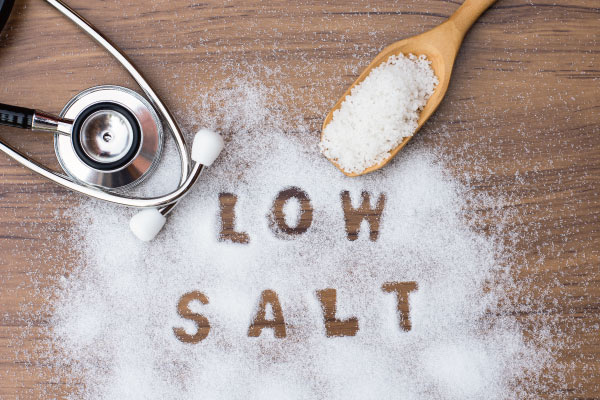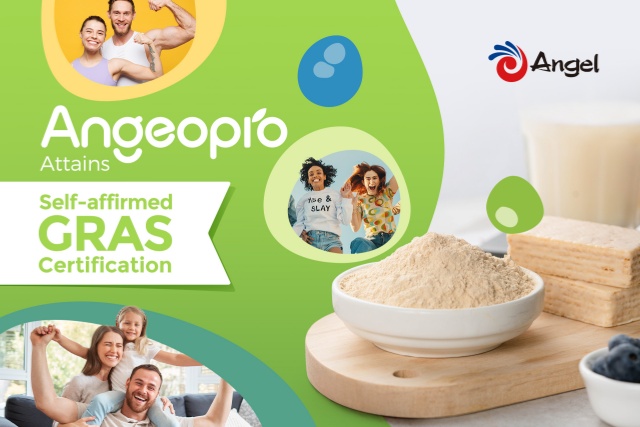-
Home > News & Events > News > Ye-savory
By Andria Kades
The US Food and Drug Administration (FDA)’s voluntary sodium reduction targets are moving the onus from consumers to food suppliers. This is according to industry experts, who speak to NutritionInsight about what this means for companies, consumers and reformulation offerings that can fill this void.

“These targets are designed to accelerate industry response and innovation,” says Kay Marshallsay, global portfolio director, fermented products and salt reduction at Kerry.
The sodium reduction targets span 2.5 years and are aimed across a broad range of processed, packaged and prepared foods.
Onus on industry
For taste and nutrition company Kerry, the developments mark a shift in attention from consumers encouraged to reduce their salt intake to food suppliers themselves.
“These targets have made it more front of mind for US customers who are in an earlier stage of nutritional optimization of their products and created an urgency for reformulation,” Marshallsay notes
“Sodium reduction is not a new topic. Consumer interest in health and wellness has been driving this for a long time. However, the recent FDA guidelines are shifting direction by focusing on the food supply itself to reduce total salt intake in the population.”Too much salt can contribute to high blood pressure, which is linked to heart and kidney problems, as well as increased risk of stroke.
Impacts beyond the US
Similarly, for flavor and fragrance giant Givaudan, the health risks of sodium overconsumption have long been known, and the company has catered across numerous regional initiatives aimed toward reducing sodium, such as Nutriscore in Europe or Black Labelling in Latin America, says Matt McGuffey, product manager, savory, Givaudan taste & wellbeing.
“We’re excited to see that the FDA is moving things in this direction as well, and are looking forward to helping our US customers rise to the challenge of further reducing sodium in their recipes,” he says.
In China, sodium reduction guidelines are expected to make food companies reduce 20% of sodium distribution in all types of processed foods by 2030, according to Li Pei, general manager of protein nutrition and flavoring technology center of Angel Yeast.
“Salt reduction is both an opportunity and a challenge for us,” he says.
Sodium is an essential nutrient in the body for maintenance of plasma volume, acid-base balance, transmission of nerve impulse and normal cell function.
Reformulating experience
Sodium is used for taste, preservation and texture, meaning reformulating products is a challenging task if shelf life and flavor are to remain unchanged.
“There is a magnitude of challenges when reducing or replacing sodium. Sodium as a nutrient is detected through specific receptors. The signal generated is very specific and unique,” Marshallsay notes.
“Alternative solutions can not trigger the signal to the same degree; you need to stimulate cross-modal reaction to generate a physiological response with the reduced sodium levels,” she adds.
McGuffey explains that salt plays three important roles when it is consumed, starting from “the initial taste impact, the body and mouthfeel during chew down and a pleasant lingering aftertaste.”
Reducing salt levels means that it is not as simple as lowering sodium levels, but different formulation strategies need to be employed for each distinct role.
Taste is king
For food manufacturers, the biggest concern is whether food can maintain a delicious taste if the salt content is reduced, according to Eric Ao, general manager of Angel Yeast Europe division.
“Salt can enhance the flavor of dishes and balance the overall taste profile. It has been considered the “King of Taste,” and almost every chef knows that the umami taste can be generated only in the presence of salt.
Where packaged foods are concerned, salt stimulates taste, prevents corrosion and masks off-notes, he adds.
Costs of alternatives
“Although low salt consumption is good for health, whether products that have less umami taste can be accepted by consumers remains a challenge. Another challenge is price,” Ao highlights.
“Salt is one of the cheapest ingredients, so by replacing it with other ingredients, there may be an impact on prices and costs,” notes Mieke Bloemen, market manager snacks Europe, Griffith Foods Europe.
According to Marshallsay, sodium has a preservative effect and thus, reducing it can create shelf life challenges.
Though there are many preservative solutions on the market, “both clean label and conventional are sodium-based and contribute sodium to the final product nutritional values. Drying organic acid-based products with no and low sodium content can be challenging/costly,” he notes.
Companies are investing in a lot of research to find the best way to reduce sodium, without affecting taste and preservation.
Research is the way forward
Companies have long been researching alternative solutions as a result of more health-conscious consumers seeking to lower their sodium intake, often heeding advice from the World Health Organization.
Swapping some sodium with potassium has already been flagged by nutrition groups across the world as a potential alternative which could reduce health risks.
Givaudan has already picked up on this and notes “a chicken noodle soup with a 25% reduced-sodium compensated with potassium chloride could utilize a chicken flavor to potentiate the diminished chicken taste, an umami and mouthfeel enhancer to build back body and a masker to neutralize the metallic aftertaste of potassium chloride.”
For Kerry, although salt reduction is challenging, the company’s approach is holistic.
“We take a “tool-box” approach to harmonizing and rebalancing healthier and tastier products that are sodium-reduced. Whether it’s meat, snack, meat alternatives, dairy, meals or sauces, we break down the challenges across taste, texture and shelf life,” Marshallsay notes.
The company’s Tastesense Salt solutions explores the impact of sodium on upfront, middle and aftertaste, as well as preservation, she adds.
Griffith Foods also utilizes a holistic solution, with a Sodium Flex Toolbox, which includes a set of solutions replacing the function of salt and sodium, according to Bloemen.
“Consumers will not notice the lower sodium content of their favourite foods. The taste of salt can be ensured by a combination of salt boosters and salt replacers,” she adds.
According to Pei, flavor enhancer has become a mainstream way to reduce salt, such as Angel Yeast’s extract, which has become widely applied in instant noodles, pickles, puffed snack food and meat products.
Soy sauce has been a key target of salt reduction and at present, 90% of salt-reducing soy sauce on the market has added yeast extract, reaching the target of 20% salt reduction, he notes.
Source: Foodingredients1st
This exclusive interview was published in Foodingredients1st.
Link to the following landing page: https://www.foodingredientsfirst.com/news/fda-sodium-targets-industry-flags-challenges-and-opportunities-around-taste-and-shelf-life.html




